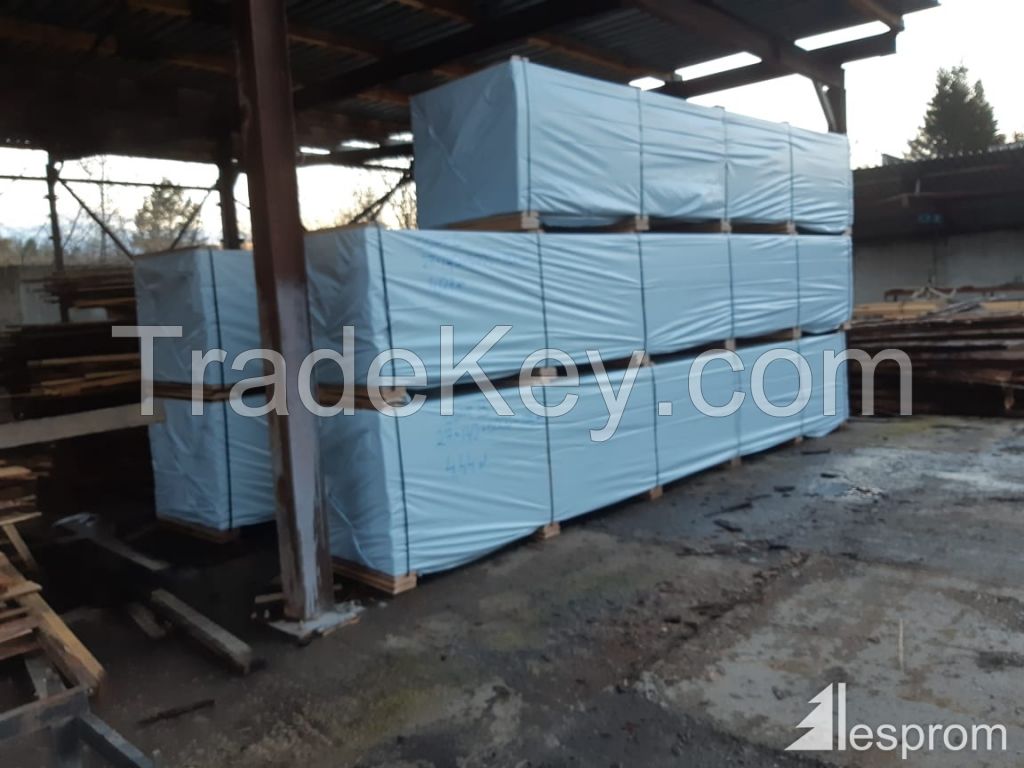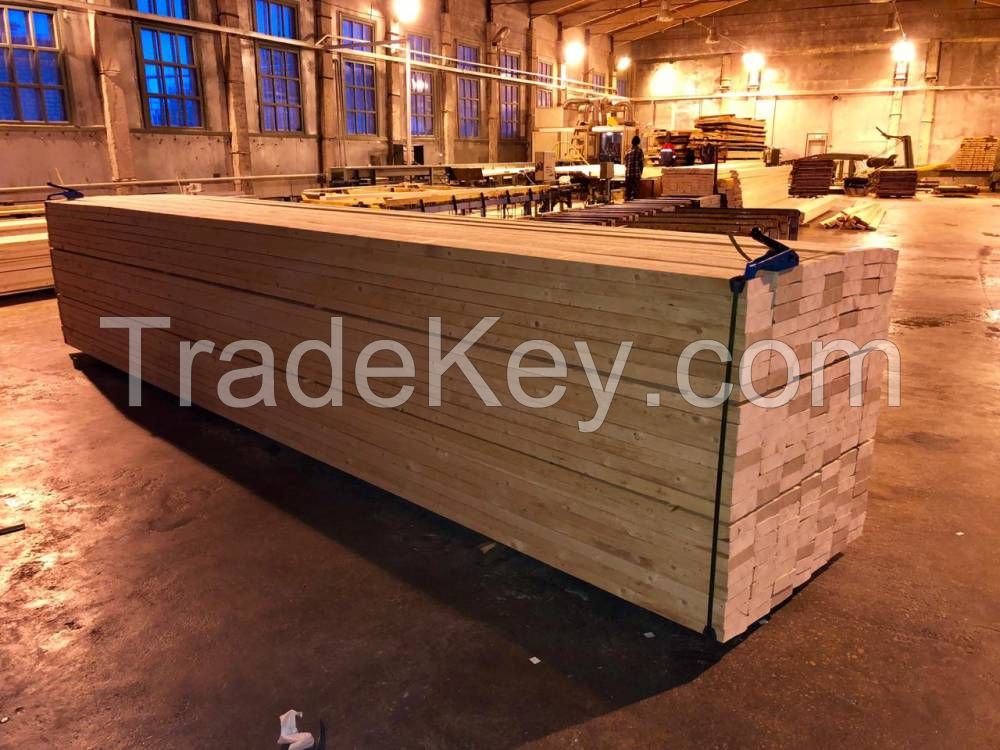Product Description
There are many types of larch, each belonging to the Larix genus.
Siberian Larch (or Russian Larch) is known scientifically as Larix
sibirica.
This particular species grows natively as far west as the Finnish
border, with distribution eastwards towards central Siberia in
Russia — hence the name! The species has also been introduced to
Canada, the US, Iceland and Greenland.
Siberian Larch is a frost-hardy tree; its capable of surviving in
freezing, adverse temperatures. When fully grown, it reaches
heights between *0 and *0m and has needle-like leaves, with a 1m
trunk diameter.
As a result of its extreme native climate, Siberian Larch grows
extremely slowly. Interestingly, however, these inhospitable
growing conditions imbue the timber with many useful and practical
properties, suiting it to many purposes — particularly exterior
projects.
Is Siberian Larch a hardwood? Technically, the answer is no —
coming from a coniferous tree, its officially classified as a
softwood. Despite this, Siberian Larch is actually one of the
hardest softwoods in the world. As a result of its punishing
upbringing in sub-zero Siberia, larch has plenty of hardness and
natural durability. In fact, it has greater density than many
hardwoods!
Once harvested, Siberian Larch starts its life as a golden-yellow
wood, but left untreated, will eventually weather to a beautiful
silvery-grey.
What are Siberian Larchs properties?
Appearance
Colour: Creamy yellow to light brown, weathering to a beautiful
silvery-grey without treatment
Grain: Very straight, dense and fine with tight growth rings
Texture: Smooth
Because of its slow growth, Siberian Larch has incredibly tight
growth rings and a very dense, fine grain. Depending on the grade
chosen, this specie can generally contain small tight knots. The
application of a high-quality stain can accentuate this beautiful
natural tapestry, making the wood a distinguished and sought-after
choice in architectural design circles.
It also makes it unique — with such character, no two pieces of
Siberian Larch are the same as each other. Underpinning the
popularity of Siberian Larch is also its versatility; theres rarely
a setting or space where its Scandi style hues arent at home.
Upon close inspection of some Siberian Larch timber, subtle colours
can appear, from creamy whites to reddish browns. If left for
around two years without any treatment, the wood will attain a
natural grey weathered look which, depending on your vision, is no
bad thing. Monochromatic designs can add a touch of distinguished
class!
Scratch resistance
As a species, larch is a product of its growing environment: the
cold, sub-zero forests of Siberia. With a remarkably slow growing
time, the wood is heavy and packed full of density.
This timber species is highly resistant to knocks, bumps and
scrapes, suiting it ideally to exterior applications such as
cladding and decking. With fewer abrasions, there are also fewer
areas for moisture to penetrate the wood.
Siberian Larch has a density of **0kg/m³. For comparison, this
makes it more dense than Western Red Cedar, which clocks in at
**0kg/m³ (still respectable, hasten we add)! Siberian Larch also
scores a very impressive 1,**0 lbf on the Janka hardness scale,
ahead of many other popular commercially available hardwoods.
Rot, insect and moisture resistance
This timber is built to cope with the Siberian climate — meaning
its more than suited to exterior application in the UK. High in
resin, extractives and other chemicals, Siberian Larch boasts some
mind blowing natural defences to the outside elements.
Resin is what trees produce naturally to protect themselves from
injury, pathogens and insects. Resinous woods like Siberian Larch
have natural antiseptics which repel insects.
When woods are exposed to moisture, they can tend to warp and bend.
Because of its high density, Siberian Larch doesnt experience as
much moisture penetration, making it far less prone to the
issue.
Such is its natural durability, unlike many other species, Siberian
Larch can be left without stain or paint treatment. For an
exceptional exterior, you cant go wrong with larch.
Workability
With such high levels of density, strength and scratch resistance,
you might be forgiven for thinking that Siberian Larch is a very
tough timber to work with.
In fact, this is far from the truth. As well as taking stains very
well (which can actually accentuate the grain), Siberian Larch also
has good drilling properties, takes fixings well and has good
machining and gluing qualities.
Quick tip — to avoid staining and corrosion, make sure you use
top-quality stainless steel fixings when you work with your
Siberian Larch. After all, quality timber deserves quality fixings,
right?
Its also recommended to drill your holes instead of nailing to
avoid the possibility of splitting. Because of its high density,
ensure that any tools are kept sharp.
What is Siberian Larch used for?
Cladding
Fencing
Decking
Joinery
Flooring
Because of its remarkable natural physical properties and devilish
good looks, Siberian Larch is a go-to choice for a wide range of
building projects, particularly outdoors. Some of the most popular
commercial and household uses for this wood include cladding,
decking and fencing.
Such is its strength, density and scratch resistance, Siberian
Larch is even used for velodrome track surfaces around the world,
so keep an eye out next time youre watching some track cycling.
Some lesser-known uses for the wood include railway sleepers and
mine props.
Essentially, wherever a timber will be asked to stand up to the
elements or a few knocks and bumps, you can count on Siberian Larch
to do the trick.
| Country: |
Russia |
| Model No: |
Siberian Larch
|
| FOB Price: |
528 ~ 515 / Cubic Meter ( Negotiable ) (Negotiable)
Get Latest Price
|
| Place of Origin: |
Khabarovsk Krai (Russia) |
| Price for Minimum Order: |
528 per Cubic Meter |
| Minimum Order Quantity: |
1000 Cubic Meter |
| Packaging Detail: |
Train/Truck/Ship container |
| Delivery Time: |
25 days |
| Supplying Ability: |
10000 Cubic Meter per Month |
| Payment Type: |
T/T, L/C |
| Product Group : |
- |





